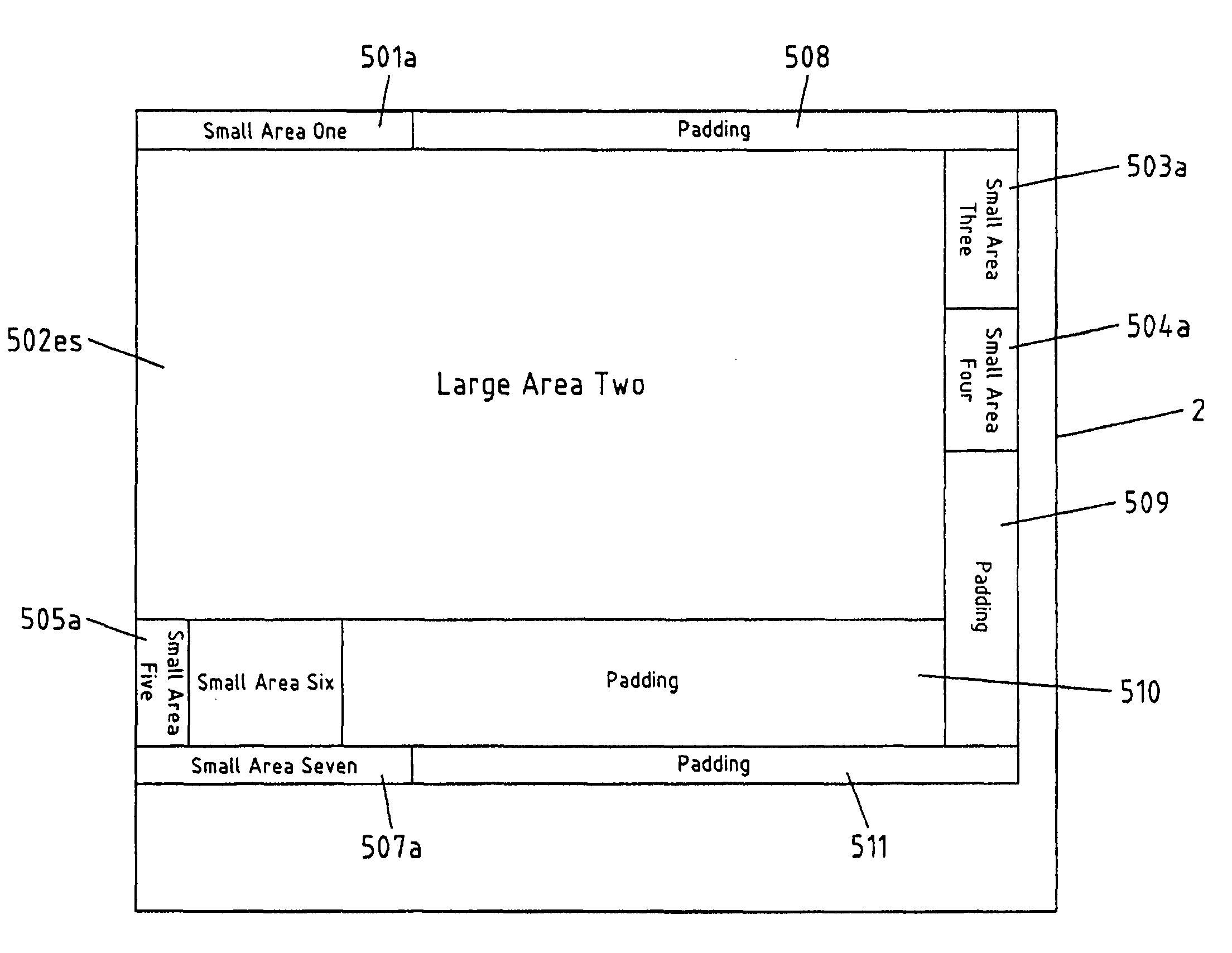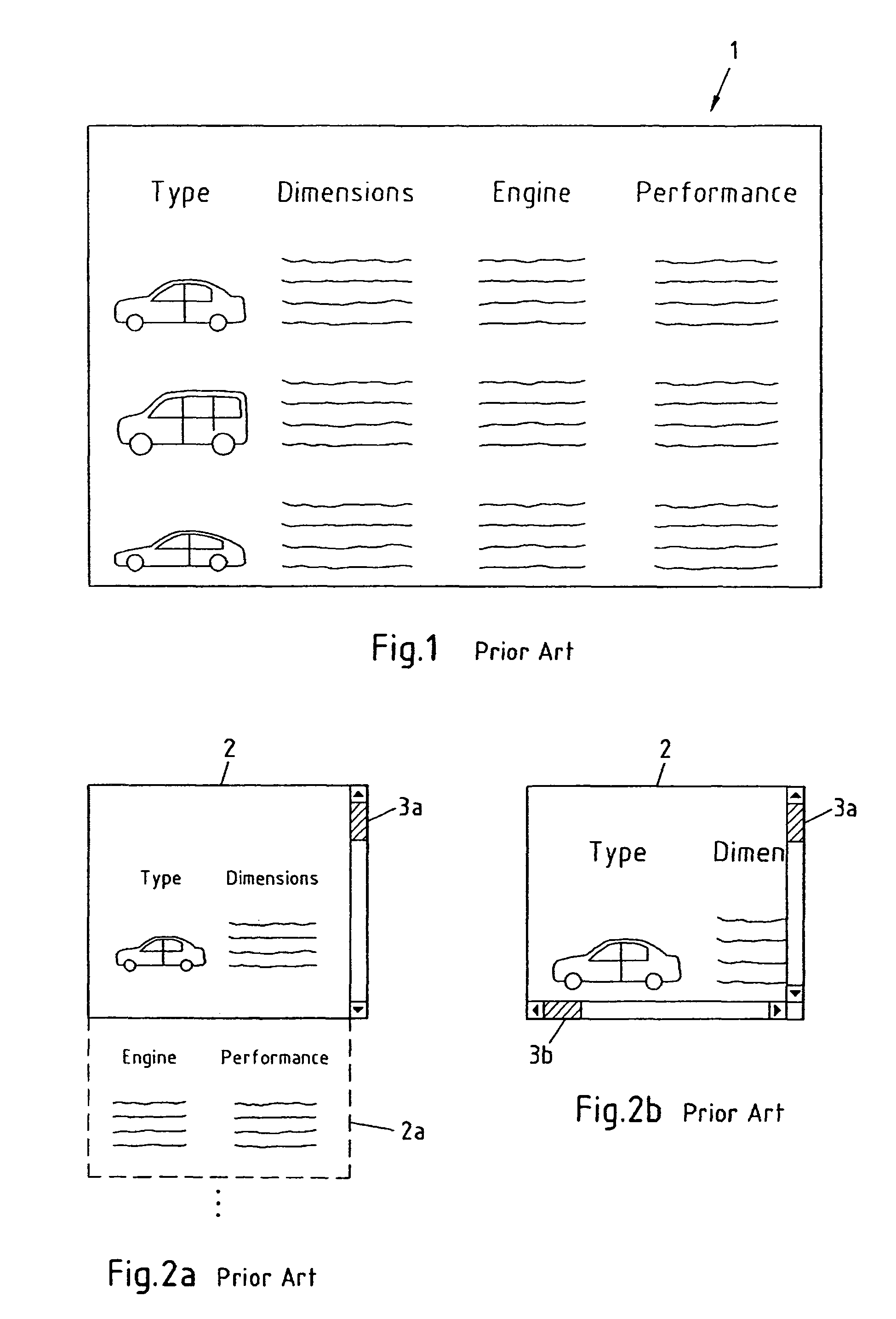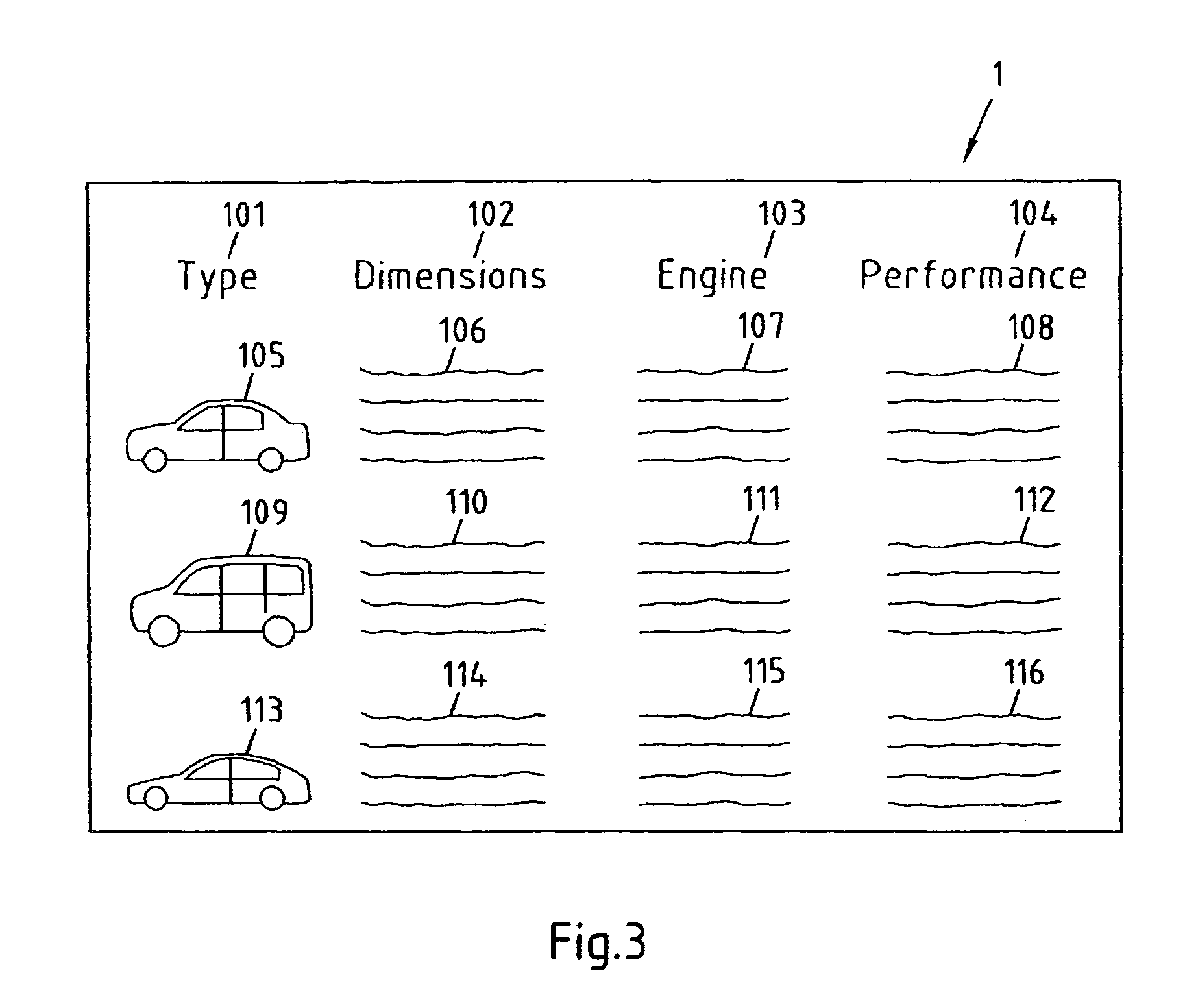Presentation of large pages on small displays
a technology of large displays and small displays, applied in the field of large displays on small displays, can solve the problems of increased user discomfort, increased display size, and increased display size of holding devices, and achieve the effect of improving the portrayal of the contents of said selected areas
- Summary
- Abstract
- Description
- Claims
- Application Information
AI Technical Summary
Benefits of technology
Problems solved by technology
Method used
Image
Examples
Embodiment Construction
[0056]FIG. 1 depicts an exemplary Hypertext Markup Language HTML page 1 that basically comprises a table with four rows and four columns. The content of this HTML page 1 is related to information on cars, and each of the last three rows of the table contains a picture, dimension parameters, engine parameters and performance parameters of one specific type of car. Note that the textual information in the table cells is only depicted symbolically.
[0057]FIG. 2a depicts the HTML page of FIG. 1 being rendered to fit the width of a display 2 according to the prior art. With the HTML page 1 being too large to fit on the display 2 of a portable device, for instance, a mobile phone, the page has to be rendered, and it is the result of the rendering that only the left upper quarter of the HTML page, in slightly reduced scale, is visible on the display 2. To avoid at least horizontal scrolling, the right upper quarter of the HTML page 1 is now positioned below the left upper quarter that is vi...
PUM
 Login to View More
Login to View More Abstract
Description
Claims
Application Information
 Login to View More
Login to View More - R&D
- Intellectual Property
- Life Sciences
- Materials
- Tech Scout
- Unparalleled Data Quality
- Higher Quality Content
- 60% Fewer Hallucinations
Browse by: Latest US Patents, China's latest patents, Technical Efficacy Thesaurus, Application Domain, Technology Topic, Popular Technical Reports.
© 2025 PatSnap. All rights reserved.Legal|Privacy policy|Modern Slavery Act Transparency Statement|Sitemap|About US| Contact US: help@patsnap.com



